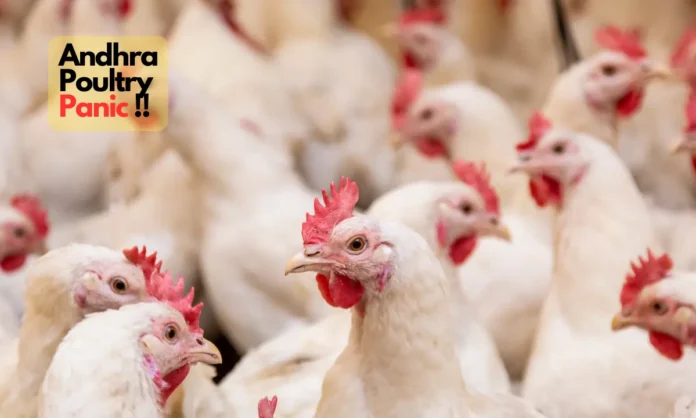Summary
- A two-year-old’s death in Palnadu district sparks confusion over bird flu vs. leptospirosis, shaking public trust in poultry safety.
- The poultry industry, just recovering from February’s bird flu outbreak, faces another wave of consumer withdrawal.
- Farmers blame the state’s messaging for “destroying confidence” and demand clear communication and immediate relief measures.
Muddled Messaging, Deepening Crisis: How a Single Death Sparked Panic
The poultry sector in Andhra Pradesh, already battered by a bird flu outbreak earlier this year, is teetering again—this time over uncertainty surrounding a child’s death. On the surface, it appeared to be a straightforward tragedy. But what followed was a swirl of conflicting statements from health authorities, triggering widespread public panic and market disruption.
The Palnadu district incident, where a two-year-old succumbed to what officials initially feared was avian influenza, reopened old wounds. Despite the Animal Husbandry Department confirming no active bird flu cases since March and enforcing successful containment operations, public memory is short—and fear, quicker.
What should have been a straightforward epidemiological clarification morphed into a PR disaster. As reports shifted focus to leptospirosis—a bacterial infection often tied to poor hygiene—the damage had already begun. Consumers started shunning poultry again, forcing farmers back to the brink of crisis.
A 2-year-old in Andhra Pradesh died from H5N1, reigniting criticism of India's NIV for delaying vital data on the virus. While NIV holds info for papers, other institutes share swiftly, emphasizing transparency. Urgent call for better H5N1 monitoring to prevent risks. 🦠🔍… pic.twitter.com/S14jYqJSk0
— Global Pulse (@GlobalPulse_Vir) April 20, 2025
Farmers Speak Out: “You’re Killing Us With Confusion”
- Poultry sales in several towns, including Guntur, dropped by up to 30% within days.
- Federation President accuses government of inconsistent statements harming the sector.
- Farmers fear another price collapse and mounting debts.
Andhra Pradesh Poultry Farmers’ Federation President Suresh didn’t mince words. “First, they said bird flu, now they say leptospirosis. This confusion is hurting our industry. The government must stop these mixed signals.”
He argued that while disease management may be under control biologically, the same cannot be said for its economic and psychological fallout. “We culled flocks, followed every protocol. But what’s the use if one ambiguous press note sends customers running again?”
In February, AP’s poultry sector lost an estimated ₹80 crore in under two weeks due to avian flu-related panic. Although March had seen gradual recovery, this latest episode has rekindled anxieties—without any fresh infection reports to justify the consumer retreat.
Public Distrust and Shifting Preferences: Fish Rises as Chicken Falls
- Consumers in Guntur, Palnadu, and Vijayawada report switching to seafood due to health fears.
- Local markets note sharp drops in broiler chicken sales; some retailers say losses may exceed February levels.
- Experts reiterate cooked poultry is safe, but perception remains the biggest hurdle.
“We avoided chicken in February and had just started eating it again,” said T. Rajesh, a resident of AT Agraharam. “Now, we’re back to buying fish and prawns.”
While the state’s Additional Director of Medical Education, Dr. Venkata Sundarachary, emphasized that properly cooked chicken remains safe, the damage has been psychological. “The cause of death is still under review. It’s important that the public waits for verified information,” he said, trying to stem the tide.
But with visuals of the grieving family circulating online and local WhatsApp groups teeming with unverified claims, misinformation spread faster than facts.

Between Caution and Collapse: What Andhra’s Poultry Sector Needs Now
- Health officials have confirmed all contacts tested negative for bird flu.
- The state is launching awareness drives, but farmers demand immediate support.
- The need of the hour: a unified state-wide public reassurance campaign and economic buffer for small poultry operators.
A senior official at the Public Health Department told UnreadWhy, “We are prioritising awareness and food safety literacy at the community level, but this will take time.”
Farmers argue time is a luxury they cannot afford. “We’re still paying debts from February,” said K. Nageswara Rao, a mid-size poultry farmer from Narasaraopet. “This uncertainty may push many into closure if not addressed immediately.”
Beyond controlling disease outbreaks, the real challenge before Andhra’s agricultural ministries is communication. As this case shows, perception can do more damage than pathogens.


